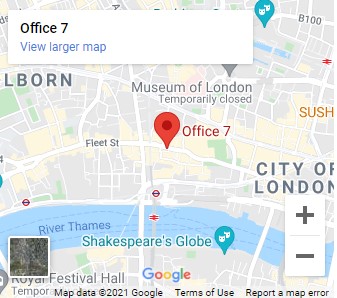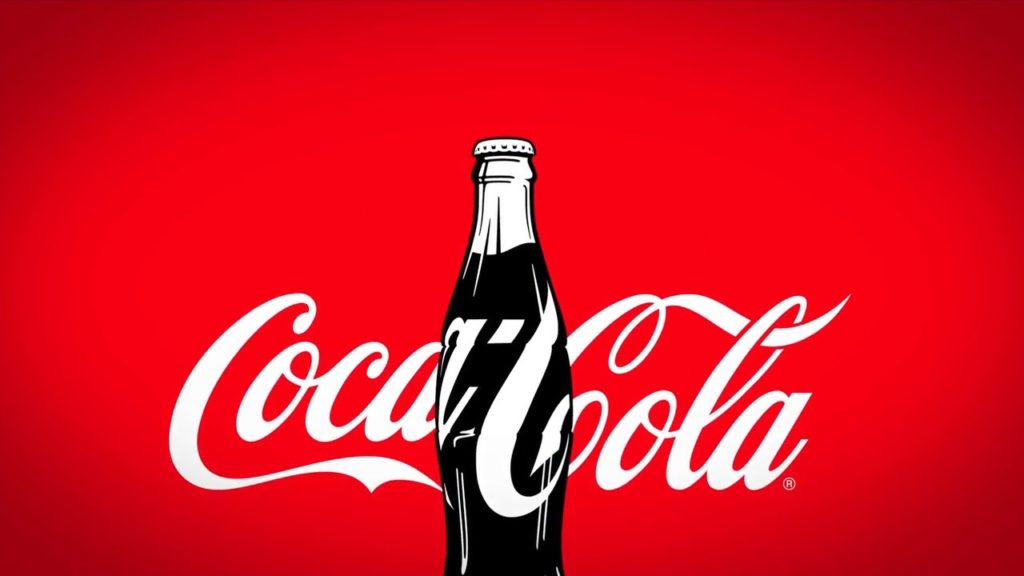Coca-Cola has a confirmed track record by capturing customer’s attention. The campaigns can be traced back since the 1970s during the famous “I’d like the Buy the World a Coke” campaign. It was characterized by an iconic “hilltop” advert that featured people from all corners of the world. The successful campaign can be attributed to a winning Coca-Cola formula. Multi-step flow theory will be used to analyze Coca-Cola advertising campaigns. Coca-Cola marketing team launched a worldwide campaign with multiple media platforms, various moving parts, partners from 80 diverse states, and new workflows; thus multi-step flow theory is an appropriate theory to analyze the advertising campaign since there are various transmissions in the communication from a source to a vast audience.
Detailed Description of Coca-Cola advertising Campaigns
Coca-Cola Company has launched several winning adverts over the past years. Lately, the soda firm repeated the trend with the “Share a Coke” campaign. However, the campaign was more sophisticated compared to those that prevailed in the 1970s. Consequently, the “Share a Coke” campaign increased sales and introduced the drink to a cohort that considered Coke as an old-fashioned. People can learn a lot from the “Share a Coke” promotion. People can as well examine and analyze the undertakings that enabled the campaign to be effective. The insights discovered from the analysis indicate that it narrowly reflect the four disciplines for consistent and repeatable outcomes that are referred as “The Wrike Way.” It is a procedure for accomplishment that is said to be successful for more than 16000 creative and marketing teams. The “Share a Coke” promotion can be broken down using The Wrike Way’s four disciplines as well as the implementable insights that firms can use in their marketing campaigns. They include the planning phase, the process phase, the collaboration phase, and the visibility phase.
The Planning Phase
The “Share a Coke” promotion necessitated configuration between various departments and teams across the globe. The campaign was initially launched in Australia and later projected to reach more than 80 nations in seven years. That called for original content in various formats and languages, including TV ads and prints, social media, websites, SMS messaging and billboards. The planning of the promotion includes the following:
- 225 trademark searches
- 2302 original pieces
- 4000 hours discussing with stakeholders
- 40 hours searching for the appropriate shade of red ink
- 5287 words that were likely to be blocked from labels
- 150 submissions to marketing authorization
- 25 risk evaluation conferences
The planning stage also entails the following:
- Start with the client. The Coke team highlighted the millennial market as the greatest opening and created a campaign that could capture one of the famous behaviors (social sharing). The company conducted research that indicated that although young people treasured Coke as iconic and big, they felt the company was not communicating with them at eye level. That is why the company included the first names on their drinks as a way of communicating to their fans at eye level.
- Utilizing the information to define the objectives. Coca-Cola and Ogilvy created the promotion with two objectives namely; increase their sales during Summer time in Australia and communicating straightforwardly to millennial clients (Hesselbein, 2015).
- Communicating at every phase of the planning cycle. All departments in the firm were frequently updated on occurrences and what was required.
The process phase
The company is used to challenging and massive campaigns. However, the “Share a Coke” promotion has an exceptional requirement that the Coke squad developed completely new production processes and workflows. The greatest challenge was altering the packaging of their product. Every Coke bottle was to contain the personalized name, and every part had personal alphabets, languages, and names. The issues were tackled using high-speed printers from HP; maintained constant communication, well-structured contingency strategies, excellent application of automation, and appropriately documented processes thus ensuring everything was perfect.
The Collaboration Phase
The “Share a Coke” promotion could not be successful without worldwide collaboration. Also, there was internal collaboration for Coca-Cola’s operations, product, marketing, legal, and design teams. Moreover, the company also collaborated with external agencies and partners, even uniting with millennial influencers like Lupita Nyong’o, Selena Gomez and Ludacris to communicate to the masses.
The Wrikes Way provide reasonable leadership that guarantees corporations operate efficiently:
- Firms should be clear on who is liable for what responsibilities. Internal and external responsibilities of stakeholders should be clearly stated to ensure the success of the project.
- The firms should establish appropriate people for different tasks. Regardless of professionals in a company, they should seek experts from outside to help in refining and bringing the project to materialization.
The visibility phase
Information can help firms make appropriate decisions, but it can only occur if they can access it. Coca-Cola had clear objectives during the planning stage, thus they did not find difficulty when collecting data across the continent. There was a well-structured digital element, thus there was easy tracking, reporting, and measuring of precise figures of personalized cans (Daniel, 2018). Consequently, there was improved logistical planning as the promotion moved to other countries. Finally, timely and regular reporting on the promotion’s progress enabled Coca-Cola to swiftly optimize and iterate freeing the firm to chase the highest ROI operations for years.
The Wrike Way provides some applicable recommendations for applying data in decision making:
- Amassing all the conversations in one place. The sparkling and effortlessly traceable #ShareACoke hashtag was placed on all marketing resources that Coca-Cola’s team could. The team maintained a pulse of the conversation occurring on all social networks for the company’s visibility.
- Tying the tools together. By linking the systems and transmitting the data in one place, Coke’s team was able to monitor the status of the campaign in a timely manner and acted accordingly when called upon (Foster, 2008).
- Visualize the reporting process. People within the Coca-Cola Company were updated regarding results through internal presentations that used enticing charts and graphs. Clarity in reporting enables people to establish the necessary step to undertake.
The success of “Share a Coke” promotion
Following the campaign launch, the consumption of Coke among teens grew by 7% and general sales increased by 3%. Facebook traffic rose by 870% and 160000 fans wrote 170000 tweets. Also, as the campaign reached all the continents, more than 1000 names were printed on bottles and cans and with over 150 million personalized bottles being sold. #ShareACoke became the leading worldwide trend (Daniel, 2018). Consequently, there were more than 1 billion impressions. The campaign increased American sales by 2.5% that had previously plummeted and continues to expand in latest and creative approach that raises the profits.
Execution of the campaign is crucial
What initially began as 150 words innovative message turned to be a multi-channel, worldwide marketing promotion that persists to be applied almost seven years later. Extensive, integrated promotions across borders, mediums, and channels are the future. It is hard to execute large-scale marketing campaign currently owing to increased transformations accompanied by on-demand economy’s intricacy. A solid project management toolset and methodology is vital to attain high-level collaboration and deliver desired outcomes.
Description of theory applied
The study of mass media and communication has resulted to development of various theories: critical theories, functional and structural theories, cognitive and behavioral theories, interpretive theories, and interactionist theories. The metatheorical approach to be discussed in this paper is a cognitive and behavioral theory. The cognitive and behavioral theories mostly focus on the psychology of people. Cognitive theory concentrates on the rationality of an individual’s thinking trends and the link between behaviors, feelings, and thoughts (Russell, 2010). On the other hand, behavior theory focus on hoe human conduct either problematic or adaptive is eliminated, sustained and developed via its external fortification.
The theory to be applied in this paper is the multi-step flow theory. This theory assumes that opinions flow from mainstream media to opinion leaders prior to being distributed to a vast population. It is a fraction of media influence. It is also referred as diffusion of innovations theory. It was initially launched by Paul Lazarsfeld in 1944 and later elaborated by Elihu Lazarsfeld in 1955.
Theory:
The multi-step flow theory of communication is an enhancement of the two-step flow of communication model. According to this theory, data passes through various “channels” of analysis before it reaches the projected audience. According to this theory, opinion leaders meddle between the media’s direct content and the audience’s response to the message (Davis, n.d.). Also, opinion leaders persuade others to change their behaviors and attitudes more swiftly compared to mainstream media since the audience has the capacity to connect to an opinion leader compared to a news program or an article on newspaper.
It can be explained using a diagram:
According to the diagram:
- Step 1a and 1b, mass media information flow to the opinion receivers, information receivers, and opinion leaders. Opinion seekers are people who look for advice and information from opinion leaders, while information receivers are individuals who are neither influenced or influence others. Opinion receivers get information from mass media directly or “processed and interpreted” information from opinion leaders.
- In step 2 influence and information are relayed from opinion leaders to opinion receivers.
- The third step reveals two-way transfer and exchange of influence and information from opinion receivers to opinion leaders.
Analysis of Coca-Cola advertising campaign using multi-step flow theory
The Coca-Cola to make its “Share A Coke” campaign successful. The company hired experts who were skilled in marketing tactics and had the capacity to influence society. For example, Lupita Nyong’o, Ludacris and Selena Gomez. The company also trained their opinion leaders regarding the information they wanted them to disperse. This ultimately helped Coca-Cola to share a drink with their friends and families across the globe. The company utilizes various ways like social media, TV ads, SMS messaging, websites and billboards to reach the masses (Bansal & Bansal, 2018). The marketing teams are exposed to the information by the various channels and then take it and convey it to the public. The “Share a Coke” campaign is the widely shared and perceived by the masses as a trend.
People can be astonished by the widespread notion of share a coke as perceive it as madness. However, a basic suggestion from highly esteemed people has the ability and the likelihood of spreading like wildfire. If Selena Gomez, Lupita Nyong’o or Ludacris take part in sharing a coke, their fans across the world will participate too (Flicker, 2012). These celebrities have a wider impact as opinion leaders. They are revered and adored and their opinions are highly regarded by other people. Coca-Cola also utilized informal and formal opinion leaders who formulate and spread opinions regarding “Share a Coke” campaign across the globe. Through the spread of opinion regarding share a coke, people could literally observe public opinion as it formulates and solidifies. The campaign of share a coke continues to spread and increase the company revenues by astounding margins.
Apart from Selena, Lupita and Ludacris, Coca-Cola used various opinion leaders in various countries to make the “Share a Coke” campaign successful. Although the company had conducted research regarding the feasibility of this project, the collaboration of opinion leaders and stakeholders greatly helped in making the campaign successful. Generally, it is not an easy thing to spread across such a huge campaign across the world without the influence of opinion leaders (Sismondo, 2015). The use of #ShareACoke by these opinion leaders greatly boosted the company sales and raised the company’s impressions to about 1 billion.
Discussion of the key outcomes of the analysis
The multi-step flow theory is more applicable in current society and it proposes that the public fall prey of media secondhand information influence through opinion leaders. Also, through the effectiveness of the “Share, a Coke” campaign people can learn a lot. There are various actionable insights and disciplines that marketers and organizations across the world can utilize in their large-scale campaign. They include:
Lessons:
- Firms can utilize social sharing, which is a general behavior across the world as a way of marketing. They can as well identify and exploit opportunities as they develop advertising campaigns.
- Organizations should utilize data to define their objectives. Coca-Cola created the “Share a Coke” promotion with two precise goals in mind.
- Communication is a very crucial aspect of any organization. All departments should be frequently updated on what is happening and what should be done. Nothing will be accomplished without communication since people will not work towards achieving the same goal.
- Companies should automate their operations wherever possible. This will enable them to monitor operations across continents even with language barriers. Coca-Cola “Share a Coke” campaign could not be possible without automating their operations since it was labor intensive and widely spread across the world.
- Organizations should ensure they have appropriate customer touch points. They can locate their outlets strategically for easy operations. For example, Coca-Cola established 18 kiosks in shopping malls across Australia.
- Organizations should have a proper allocation of duties to the right people. This will avoid confusion since the project manager will communicate precisely the individuals responsible for diverse tasks.
- Companies should also hire experts from outside who will share helpful insights to ensure the success of their strategic plans. Coca-Cola worked in collaboration with various agencies and corporations on diverse aspects of the campaign.
- Organizations should tie their tools together and also gather their conversations in one place. Organizations should keep track of their conversations across the media to sustain their visibility. Good communication and connecting tools together will help organizations to monitor their operations and act accordingly.
The improvements that would be recommended for Coca-Cola advertising campaign includes:
- The campaign focused mainly on the social sharing aspect. The company sold more than 150 million drinks across the globe as a result of the campaign. However, they should also include social responsibility. They should remind people to dispose of the cans responsibly after sharing. Keeping a serene environment is also very vital to humanity as well.
- The campaign also chiefly relied on opinion leaders who have great influence on friends, society, and family. The opinion leaders are highly regarded individuals and can influence people to consume the drink. However, the same can happen if the same people get involved in the shameful act. It will bring down all the glory the people associated with the drink as well as the entire company.
- The firm should explain what is managed locally and what is driven globally. The company should create market tiers, which will enable them to discover borders that might attract potential clients.
- The company should also understand the needs in the local markets and create a collaborative strategy. The global marketing plans should incorporate an extent of flexibility to handle cultural differences (Isabelle, 2012). Celebrity participation or endorsement will only operate well to the regions and areas where they are known. For example, an Indian celebrity might not be recognized in Japan or France.
Insights that multi-step flow theory offer to Coca-Cola advertising campaign
The theory provides helpful insights into Coke’s marketing campaign and how it can be applied in the modern world. The theory suggests how the company can utilize the personal influence of opinion leaders like Lupita Nyong’o, Selena Gomez and Ludacris. These opinion leaders generate opinions and spread them to the public. The impact is clear since, via the spread of their opinions, public opinions can be seen as it develops and solidifies (WANG, 2017). Fans of these celebrities across the world formulate the opinion regarding coke and make it a trend. It is might not seem logical, but the opinion leaders have the capacity and inclination to influence the public.
Conclusion
The study of mass media and mass media has resulted to development of various theories. They include cognitive and behavioral theories, interactionist theories, critical theories, interpretive theories, and structural and functional theories. The theory that applies to Coca-Cola advertising campaign is multi-step flow theory, which is also referred as diffusion of innovations theory. The theory is based on the notion that there are numerous of transmitting information from a source to the public. Coke utilized the influence of Lupita Nyong’o, LudaChris and Selena Gomez as opinion leaders. These celebrities have fans all over the world and thus they can shape people’s opinions regarding Coca-Cola. The “Share a Coke” campaign was developed to make people feel engaged at eye level. The campaign was also able to reach people who considered it old-fashioned. However, there are various recommendations like including social responsibility in the campaigns, the inclusion of global marketing plans according to local market needs and looking for alternatives rather than relying on treasure-hunt promotions.
Students working on case studies or might need academic help, might find our custom Case Studies Writing Services helpful.
Also look at some of our business services
– Business Essay Writing Service
– Business Dissertation Writing Services
– Business Report Writing
– Business Assignment Help
– Business Planning Writing Service
– Business Assignment Writing Service
Here you can check some of our dissertation services:
– Dissertation Writing Services
– Write My Dissertation
– Buy Dissertation Online
– Dissertation Editing Services
– Custom Dissertation Writing Help Service
– Dissertation Proposal Services
– Dissertation Literature Review Writing
– Dissertation Consultation Services
– Dissertation Survey Help







